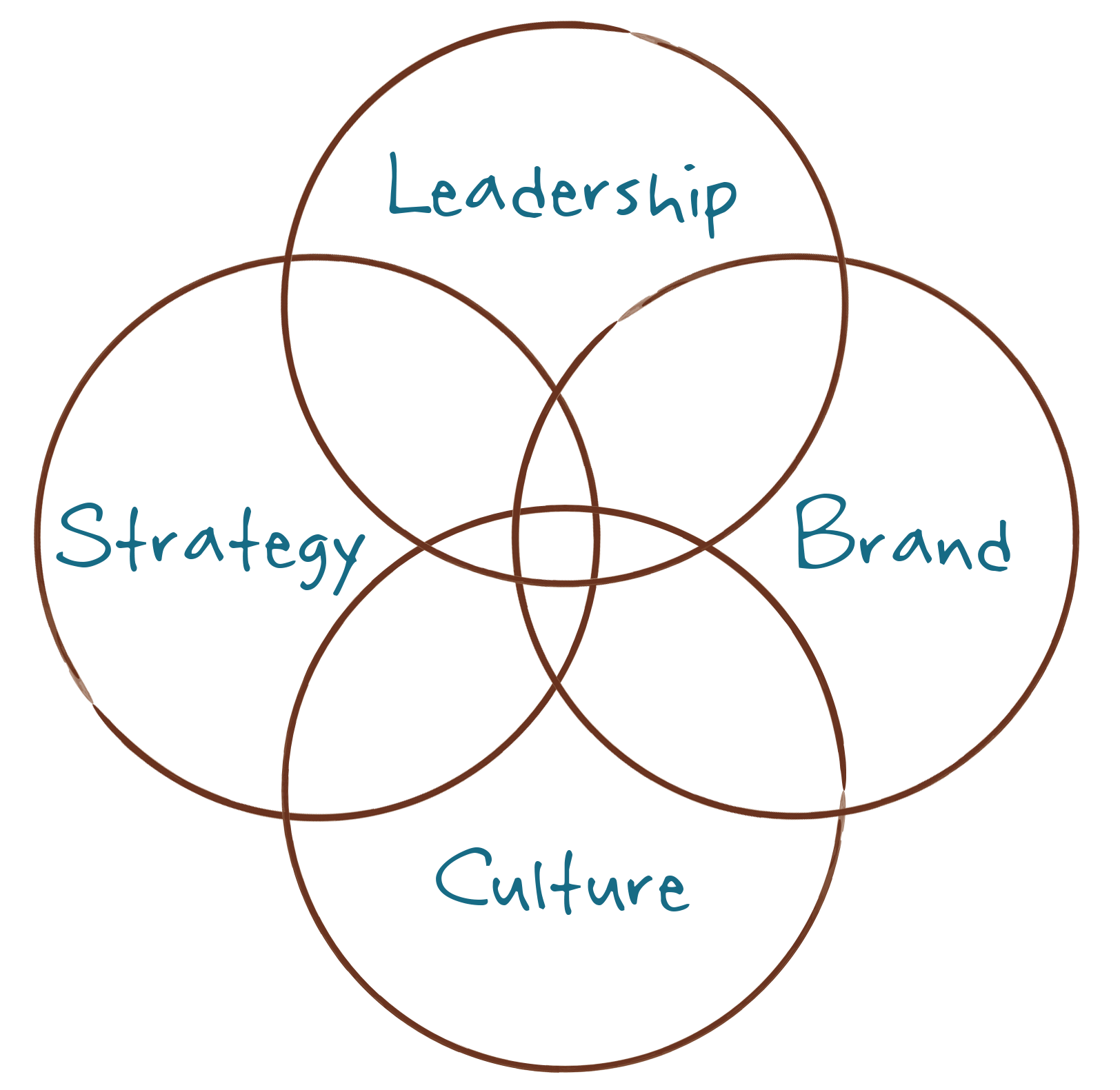Learn More about Solid Ground Consulting Client: The National Park Foundation
About Us
Solid Ground is a fellowship of consultants and coaches on a shared journey to make a difference – as a team and as partners with the leaders and organizations we support nationwide. Our path is not just professional. It’s personal.
We want a better, more just, more sustainable world. That’s what binds us to each other. And it’s what connects us to the amazing leaders and contributors in the nonprofit organizations and public institutions we have the privilege of working with every day.

Our Services

Assessment
We dig into organizational issues and challenges to understand the problems underlying symptoms.

Planning
We produce plans – strategic, succession, marketing, fundraising – that define pathways for change.

Training
We provide diverse learning opportunities for board, staff, and volunteers to help them excel in their roles.

Merger and Collaboration
We build a foundation of trust and opportunity with groups navigating these important-but-challenging conversations.
Our Approach
Understand Solid Ground’s values, and you’ll know who we are as people. Understand our core principles, and you’ll know how we define effective organizations.
Our principles are illustrated in the big idea we call the Four Dimensions of Sustainable Impact. This model defines the outcome every organization seeks: high impact, sustained over time.
The four dimensions – leadership, strategy, brand, and culture – do not exist in isolation. They overlap, shape, and influence each other. Building strengths in each dimension is akin to building the organization’s core muscles. But the finesse of an organization is found in how well these strengths work interdependently – specifically, how much an organization relies on the other three dimensions when working on any one of them. Good leaders make good decisions in all dimensions. Conversely, a weak culture can undermine the best strategy and brand.
Looking for Tools?
Good ideas come in many different forms. Some of ours can be accessed through these pages, including training and development tools to help organizations understand and implement change: explanations, examples, and worksheets.
- Assessment
- Board Development
- Fundraising
- Organizational Structure
- Strategic Planning
- Staff Management
- Other Tools
- Publications
The assessment stage is an important step to understand how you can strengthen your efforts. When making organizational changes, groups should focus on the most fundamental elements, those which will do the most to improve the effectiveness of the organization. These steps should be done up front, prior to developing a strategic plan or even looking for new board members. The assessment process will give you a much better picture of what your goals should be in these other areas.
The following items are good, solid tools for assessing the strengths and weaknesses of your organization.
Assessing Fundraising Readiness
Sample Organizational Assessment
Pre-Planning Assessment
Staff Needs Assessment
Effective organizations start with good people. Organizations must recruit the best possible people based on a profile of the specific needs of the group. Once the board members have been recruited, the board also must support new members to make them immediately effective and an active part of the team. For these reasons, board development is one of the most critical jobs for the long-term health of the organization.
Here are some tools to help you in developing a strong board of directors.
Board Development
Overview of Board Duties
Basics of Board Development
Board Duties and Staff Support
Conflict of Interest
Board Fundraising Functions
Legal Obligations of Board Members
Roles in Board Development
Policy Making
Prudent Directors Check List
Board Recruitment
Board Recruitment Process
Board Member Application
Sample Board Profile Grid
Blank Board Profile Grid
Board Orientation
Orientation and Training Program
Board Manual-Sample Contents
Board Member Orientation Agenda
Job Description – Board Chair
Job Description – Board Member
Rights of Volunteer Board Members
Board Member Agreement
Board Evaluation
Why Evaluate Board Members
Board Member Evaluation
Board Member Self-Appraisal
Few aspects of a nonprofit organization are more disliked or more misunderstood than fundraising. Yet few things define the opportunity to succeed more than fundraising.
Fundraising effectiveness often depends on other aspects of a strong organization: good people, good planning, good systems. When those pieces are in place, fundraising in the critical step of ensuring the organization has the resources to achieve its mission.
For fundraising to be effective, groups need to know how to build connections to the people who believe in their mission and invest in their community. Then they need to establish a program that provides opportunities for people to invest in the good work of the group. The bottom line: unless your organization has people who are willing and able to ask others to join in support of your efforts, you will struggle to raise money.
Overview
Assessing Readiness
Essentials of Fundraising
Who Is A Prospect
Target Constituencies
Donor Pyramid
Ladder of Effectiveness
Who Gives
Capacity Building
Fundraising Roles
Fundraising Tools
The Case Statement
Annual Giving
Setting Up a Giving Club
21 Tips To Cultivate Donors
Fundraising Orientation Packet
Major Donor Visit
Annual Giving Plan sample
Fundraising Planning
Reaching Your Goal
Fundraising Work Plan
Sample Fundraising Plan
Sample Fundraising Work Plan
Prospect Contact Plan
To fulfill its mission, an organization’s members must have a true understanding of the structure of the organization and how they fit into it.
Here are some tools to help you understand and develop a sound organizational structure, as well as a set of job descriptions for various positions within the organization.
Structure Overview
Building an Organization
Organizational Structure Charts
Committee Structure
Committee Overview
Possible Committees and Their Functions
Authority & Influence
Lines of Authority
Levels of Influence
Job Descriptions
Board Chair
Board Member
Committee
Executive Director
Volunteer
Volunteer Coordinator Role
Strategic planning can be a complex effort to define purpose and direction for several years, or it can simply focus on defining priority projects for the coming months. At every level, planning ensures that people’s time is spent well. It also provides the foundation for key policy decisions throughout the organization.
Here are some tools that can be used to assist your organization in its planning efforts.
Cycles & Elements
The Planning Cycle
The Annual Board Cycle
Elements of the Strategic Plan
Supporting Plans
Planning Terminology
Steps in Planning
Timeline for Planning
Where Do You Spend Your Time
Strategic Planning
Sample Strategic Plan
Sample Annual Plan
Sample Work Plan
Blank Work Plan
Steps for Developing Work Plans
Personal Direction Exercises
Vision Guidelines
Functional Budgeting
Creating a Functional Budget
Functional Budget Example
Functional Budget Worksheet
Sample Membership Budget
Organizations with the luxury to hire staff have the ability to take their programs to a whole new level. However, adding staff adds an important layer of complexity that groups must understand—including the appropriate roles and responsibilities for staff members compared to board members and other volunteers.
As with board members, the importance of well-staffed organizations is to hire the very best people—people with the core talents to be effective and excited about their job—and then provide the tools to make them effective.
Here are some tools to help you in developing an effective staff for your organization.
Governance vs Management
Job Description – Executive Director
Lines of Authority
Role of Volunteer Coordinator
Overview of Salary Classification
Shared Roles of Leadership
Overview of Values-Based Management
Not everything fits into a perfect box. Below are a few additional tools that might be helpful to your organization and your efforts to make a difference.
Meeting Ground Rules
Running Effective Board Meetings
Sample Functional Budget
Budget Template Spreadsheet #1 (opens a Microsoft Excel document)
Budget Template Spreadsheet #2 (opens a Microsoft Excel document)
LTA Fundraising
Orientation: What You Need to Know to Serve on a Nonprofit Board
The Retirement Bomb
Board Development
Board Development for Nonprofit Preservation Organizations, by Marc Smiley. A useful booklet addressing board development issues specific to historic preservation groups, as well as other nonprofit organizations. Available through the National Trust for Historic Preservation.
Board Governance Series, from the National Center for Nonprofit Boards. A series of 10 informative booklets addressing common issues faced by leaders of nonprofit organizations, from basic responsibilities to understanding financial statements. Includes booklets on strategic planning, the role of the board chair, and board responsibilities in fundraising.
Boards That Make a Difference: A New Design for Leadership in Nonprofit and Public Organizations, by John Carver. A best-selling comprehensive book outlining a “bold new approach to board job design, board-staff relationship, the chief executive role, performance monitoring, and virtually every aspect of the board-management relationship.” Available online through publisher Jossey-Bass.
Carver Series, by John Carver. A series of 12 booklets detailing roles and responsibilities of board members from fiduciary responsibility to planning and running better board meetings. Includes booklets on board assessment of the CEO, board assessment of itself and making diversity meaningful in the boardroom. This is an invaluable series by a respected authority on nonprofit board governance. Available online through publisher Jossey-Bass.
Fundraising
Grassroots Fundraising Journal, by Kim Klein. Published six times a year offering information to help raise money from community-based sources through special events, direct mail, major donor programs, membership campaigns and more. Sample Grassroots Fundraising Journal articles, subscriptions, and the free “Dear Kim Klein” electronic newsletter are available at Chardon Press Online.
The Board Member’s Guide to Fund Raising, by Fisher Howe. “What every trustee needs to know about raising money.” A concise yet comprehensive resource for the entire fundraising process. Shows why board members must take the lead in fundraising efforts, and shows how this role can be personally satisfying. Available through the National Center for Nonprofit Boards and Jossey-Bass.
Marketing
Marketing Workbook for Nonprofit Organizations, by Gary Stern. A comprehensive resource outlining a logical, step-by-step approach to developing a successful marketing plan for nonprofit organizations.
Management
Goal Setting, by Susan Wilson. A step-by-step book for setting personal goals, developing assertive communication skills and developing effective goal setting and management skills.
The Leader’s Handbook: A Guide to Inspiring Your People and Managing the Daily Workflow, by Peter Scholtes. A comprehensive manual for transforming management from old style command-and-control to a new, inspiring leadership style.
Managing a Nonprofit Organization, by Thomas Wolf. Offers checklists and explanations for virtually every aspect of managing a nonprofit organization: staffing, fundraising, trustees, financing, marketing, computerizing, planning and succeeding.
The Not-for-Profit CEO-A Survivor’s Manual, by George Wright. An accessible text full of common sense information for leaders of nonprofit organizations. Short and easy to read, the book addresses key issues including staff recruiting, financial management and board development.
Personnel
Nonprofit Personnel Forms & Guidelines, by Mathew Deluca and Nonprofit Personnel Policies by John Gillis. Both are extensive collections of personnel forms and policies reviewed by legal and management experts and designed to provide a working, easy-to-use resource for the nonprofit manager. Both are presented in looseleaf format and are available online through Aspen Publishers.
Planning
Strategic Planning for Nonprofit Organizations, by Marc Smiley. One in a series of booklets published by the National Trust for Historic Preservation. A comprehensive article outlining the need for and ways to approach strategic planning. Includes explanation of the phases of a planning process from assessment to setting goals and strategies and finally implementation and evaluation. Outlines the steps for developing a successful plan that truly reflects the direction and mission of an organization.
Strategic Planning for Public and Nonprofit Organizations, by John Bryson. A complete guide for strategic management in public and nonprofit organizations. Contains material on change, implementation of plans and information on planning techniques and processes. “An excellent guide to transforming seemingly immutable constraints into opportunities.” Available online through Jossey-Bass.
Creating and Implementing Your Strategic Plan, by John Bryson and Farnum Alston. A hands-on workbook for use by itself or as a companion to John Bryson’s Strategic Planning for Public and Nonprofit Organizations. This workbook provides a step-by-step process for distilling and developing a strategic plan. Available online through Jossey-Bass.
Strategic Planning Workbook, by Bryan Barry. A step-by-step, accessible workbook for organizations wanting to develop a strategic plan with achievable goals and strategies that make sense.
First Things First, by Stephen Covey. A follow-up book by the author of the best-selling Seven Habits of Highly Effective People. This text focuses on one of the key habits, putting first things first. Includes information on getting out of the crisis addiction and determining a personal mission statement, allowing readers to achieve the things that are truly important to them.
Morrisey on Planning, by George Morrisey. A series of three books from Jossey-Bass Publishers designed to guide a planning team through the process of creating powerful, functional plans:
- A Guide to Strategic Thinking addresses the critical first phase of the planning process: formulating the values, mission, vision and strategy that will respond effectively to change and help chart an effective future for an organization.
- A Guide to Long Range Planning provides the tools needed to uncover the critical strategic issues facing an organization and ways to address them. Morrisey covers creating, reviewing and modifying a strategic action plan in the process of moving forward.
- A Guide to Tactical Planning offers step-by-step instructions for identifying the specific accomplishments an organization and an individual team need to achieve, how and when this will take place and who will be accountable.


